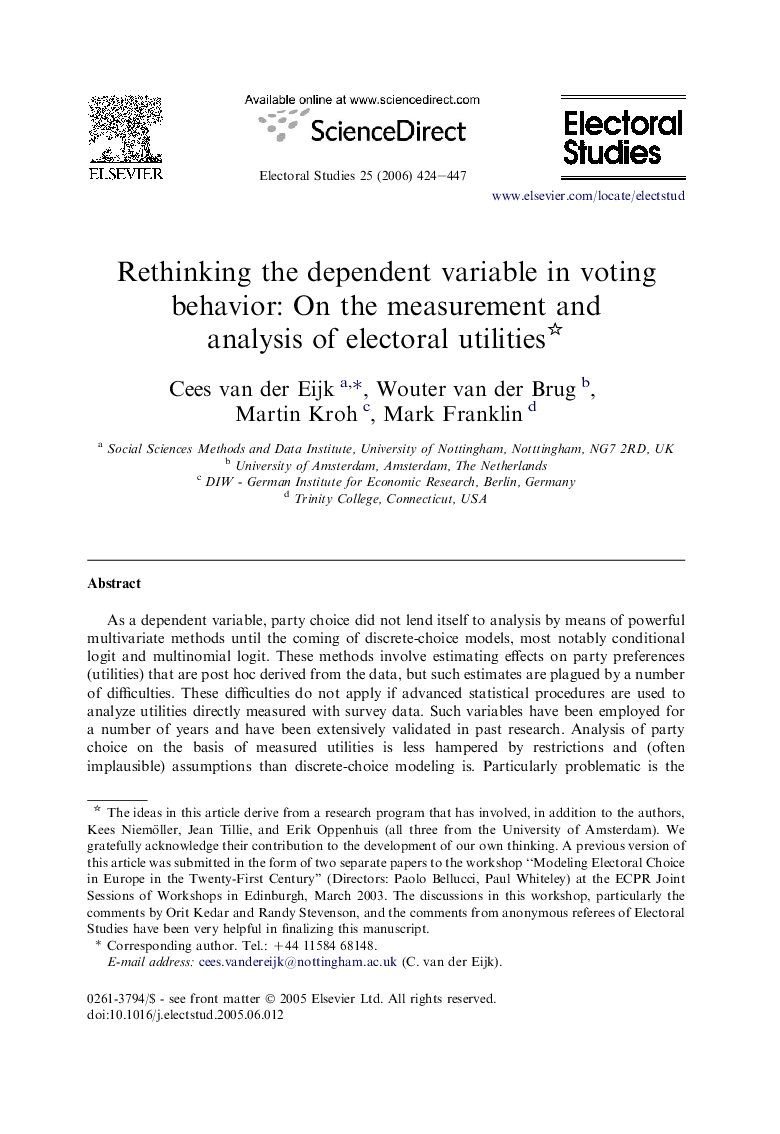| Article ID | Journal | Published Year | Pages | File Type |
|---|---|---|---|---|
| 1052288 | Electoral Studies | 2006 | 24 Pages |
As a dependent variable, party choice did not lend itself to analysis by means of powerful multivariate methods until the coming of discrete-choice models, most notably conditional logit and multinomial logit. These methods involve estimating effects on party preferences (utilities) that are post hoc derived from the data, but such estimates are plagued by a number of difficulties. These difficulties do not apply if advanced statistical procedures are used to analyze utilities directly measured with survey data. Such variables have been employed for a number of years and have been extensively validated in past research. Analysis of party choice on the basis of measured utilities is less hampered by restrictions and (often implausible) assumptions than discrete-choice modeling is. Particularly problematic is the inability of discrete-choice models to analyze small-party voting. The resulting elimination of voters of small parties results in strong biases of the coefficients of explanatory variables. No such need for eliminating cases arises when analyzing empirically observed utilities, so parameter estimates from these analyses do not contain this bias. Finally, observed utilities provide opportunities to answer research questions that cannot be answered with discrete-choice models, particularly in comparative research. We therefore urge that direct measures of electoral utilities should be included in all election studies.
